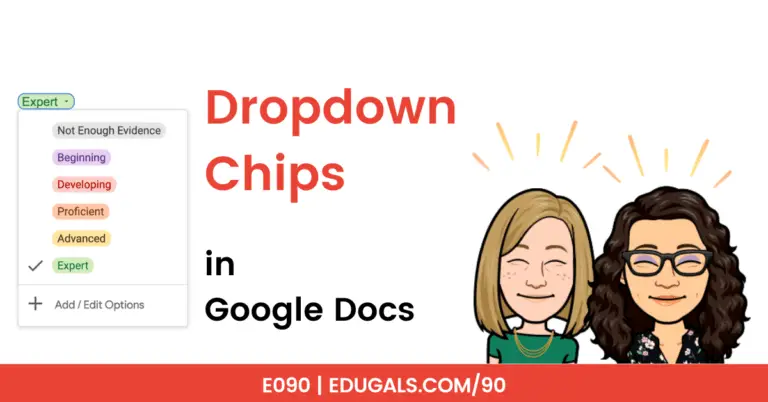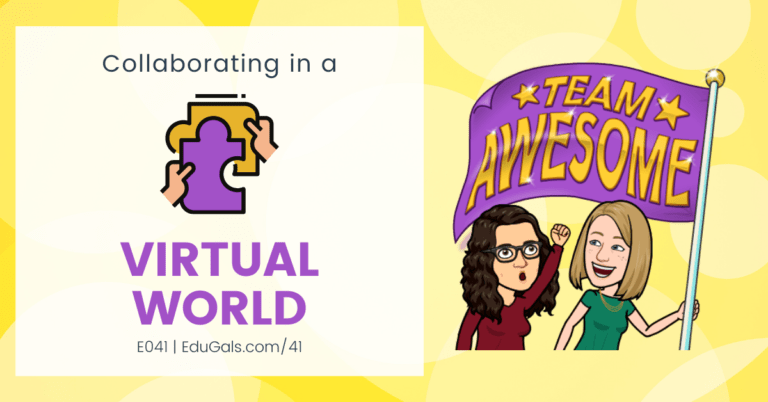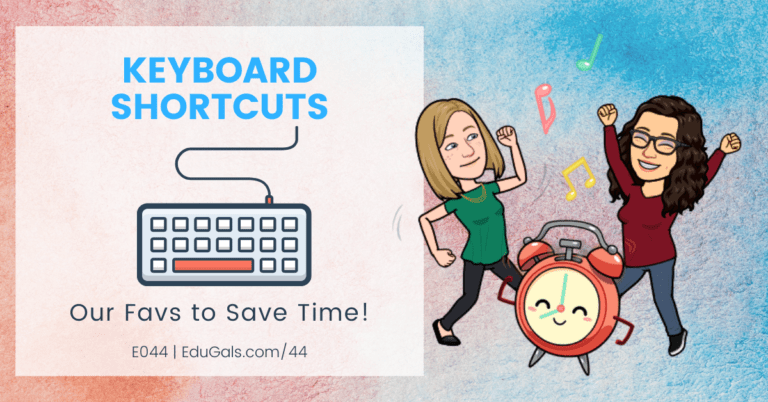Traditional grading systems, with their focus on letters and numbers, often fail to capture the true essence of student learning and growth. Enter “ungrading” – an innovative approach that challenges conventional assessment methods by emphasizing feedback, reflection, and intrinsic motivation over simple scorekeeping. Ungrading shifts the focus from grades to learning, encouraging students to engage deeply with the material and take ownership of their educational journey.
In this article, we’ll delve into the philosophy behind ungrading and explore its benefits. Discover the why of ungrading and how it can create a more meaningful and equitable learning experience for your students. We have been changing how we assess and approach grades in our classroom for a long while, but this concept of ungrading really brings it to the next level.
You can also listen to our podcast conversation about the why of ungrading below! AND… if you want to explore further, be sure to check out the second part of this article on HOW to begin ungrading.
There are many reasons why we have chosen to explore and consider this change in teaching practice. We will lay out and explain these 9 reasons for you! So let’s get started!
Grades Shut Down Learning
Have you ever noticed that once a student receives an evaluation back, and they look at the mark, that they then quickly put it away and are ready to move on? Grades have that effect!
Evaluations should be an opportunity for students to receive feedback as to how they can improve their learning – it should open up a conversation. However, it tends to have the opposite effect. If it’s a bad mark, students are quick to put the evaluation in their bag and try to forget about it.
Grades make it seem so final – students don’t want to engage or improve once they’ve seen it. The students who really need to look at that feedback to improve, are then stuck and unable to move forward. If it’s a course that builds on skills throughout, it then becomes extremely difficult for them to experience success in that course.
Shifting The Focus From Grades To Learning
Some students are so focused on the grade itself, that they don’t always focus on the learning and the process, as well as how they can improve. Students can be so focused on the final outcome that they end up missing out on the whole process of learning, and developing skills that they can then use in their future.
The emotional attachment to grades is also quite unhealthy. When students are in tears over a grade, it’s time to shift the way we mark, and get students to focus on the learning instead of the grade.
In the same way, when multilingual learners receive marks or report cards, it can be really demoralizing when their grades are low, especially since it is often a result of language versus academic ability. It creates an atmosphere where students dread grades and are unable to focus on the feedback that is provided.
Overall, grades are just a letter or a number that don’t reflect everything else that goes into the learning process at all. Ungrading brings the learning back into focus, and removes that pressure or stress surrounding the grade.
Grades Encourage Competition Over Collaboration
Another reason why ungrading is so important is because grades encourage competition over collaboration. Students can often be so focused on getting a high grade that even the formation of groups for a project becomes a competition. Then, students tend to take over if they don’t trust that a group member is doing something properly. This completely undermines the goals we have for collaboration.
Even when a test is handed back, students tend to compare marks and answers, etc. really focusing on who got the best mark versus looking at their learning, the feedback provided, and how they can improve.
This competitive spirit really takes away from the community that we are trying to build in our classroom. Often, students that aren’t as strong academically are made to feel more self conscious or ashamed of their marks, causing them to possibly withdraw more. This does not allow for the creation of a safe space for all learners!
Prior Grades Feeds Into Educator Bias
One area that is perhaps a bit controversial, is the idea that allowing teachers to view prior grades could potentially sway teachers into making judgements too soon. Previous marks can play a huge role in how we perceive students coming into our classroom.
There are so many different situations that can affect student grades: language acquisition, personal situations, etc. There are so many extenuating circumstances that could contribute to lower grades.
Many educators, ourselves included, have looked at final grades from previous courses. As much as we try not to, sometimes we are then making assumptions about our students and their potential in our classrooms. We often assume that if they do well that they must be cheating, or we set a grade prediction, and don’t necessarily push them to do better if they are achieving within that range.
Often this is done without us even realizing it – it is certainly not done on purpose or with bad intentions. However, it is important to recognize that this is happening, and to perhaps hold off on checking previous grades until a bit later on when we have concerns about progress, etc. We need to believe that students can improve, and that they can do well in your course despite whatever grade they may have earned in a previous course.
Ungrading Builds Stronger Relationships With Our Students
Ungrading allows us to get to know our students, to build relationships with our students where we can provide feedback, and students are motivated to accept that feedback and move forward.
Previously, Rachel actually tried out a bit of ungrading with one of her Grade 12 classes. Instead of attaching a grade to a lab report, she instead provided feedback only and handed it back to students. Students would then look at the feedback and fill out a reflection form. She would then respond back, revealing the grade that they earned.
The growth that these students experienced as a result of this ‘ungrading’ process was amazing. It allowed students to shift away from a focus on the mark and towards a self-reflection and the idea of embracing feedback and moving forward in their learning. The improvement throughout the semester was absolutely amazing – students really took that feedback and embraced it to actually learn and improve their lab report writing skills.
Ungrading Allows Us To Reach All Students
When you think about it, it’s the students that struggle with learning and don’t trust the education system that we should really be focusing on – we need to. consider our students’ lived experiences, their prior school experiences, where they are coming from, etc. We need to use that knowledge to build trust and buy in from our students. Grades don’t help with this!
We need to shift our focus away from moving everyone forward at the same time to approaching each student from where they are at. We often use deficit-based language when talking about students, especially in a more traditional “game of school” classroom. Those who excel at this game we refer to as ‘academically strong,’ and they tend to have high grades. Those that don’t want to engage in this game, or who don’t do well in this format, we tend to see as weaker or struggling students.
When we don’t shift away from this traditional classroom approach, or change the way we teach to engage all of our learners, then we are excluding a whole population of students that still deserve to learn while in your classroom. We can’t just put our hands up in the air and feel justified that we tried. We need to move towards ungrading and instead provide feedback that will help move our students forward. It isn’t always going to be easy, but we need to build those relationships and that trust with students because it is a team effort.
This is why the appeal of ungrading and mastery-based is so important as we move forward – it gives students the opportunity to start learning from where they are at, and move forward at their own pace. And the two approaches work so well together because of the focus on providing feedback, and having students go back and use that feedback to improve their skills.
It’s so hard to stay in the ‘why’ of ungrading – mastery is such a great way to implement and/or move towards ungrading. It really helps you to figure out where each of your students are, and how you can support them to move forward.
Ungrading even makes us think about our mindsets as teachers. Many are hesitant to assign 100% or higher marks for students. If we are shifting towards a system of teaching that ensure student success, and allowing students to master skills, then doesn’t it make sense to potentially have students earn 100%?
Ungrading Provides Opportunities To Shift Away From Traditional Evaluations
The game of school has always been about teacher dominated lessons followed by quizzes and tests. Ungrading gives teachers the opportunity to shift this traditional way of evaluating, and moving towards a strategy that has students demonstrating their learning in a different way. We no longer need the traditional unit test if we are providing feedback regularly and allowing students to take that feedback and further develop their skills.
This is actually a bit of an appeal to educators, as it could potentially mean less tests to mark – think of the time savings! If you are building in mastery checks throughout, do you even need a big assignment or evaluation for every unit?
We need to trust our students a bit more, and give up this mentality of testing. Are we trying to trip up our students? Do we doubt their learning? Perhaps it comes more from the angle of feeling pressure to back up their marks and have more evidence of student learning. Either way, we need to move away from this idea of constantly testing and evaluating our students!
That being said, if ungrading is where you are heading, make sure that you have your admin on board. They need to understand your reasoning for this shift in your practice so that they can defend you, if necessary, and they can also support you as you learn more and begin to implement this in your classes.
Ungrading Increases Student Reflection
The whole process of ungrading gives students the opportunity to learn how to reflect on their learning, and to increase their effectiveness at this skill. It gives students the chance to look at what they are good at, and what they need to work on. They can also brainstorm how they can improve their learning, and how to move forward.
It also then opens up opportunities for students to approach you, their teacher, to talk about their learning as well.
In teachers’ college, there was a lot of reflection built into the program (AQ and some Master’s programs too!). This is where a lot of growth can happen. Our podcast even acts as our own form of reflection with respect to our teaching practice. So much learning can happen in this space, and grades get in the way of this learning!
Ungrading Is An Integral Part Of Equity Work
Equity work is hard. If we were to look at a breakdown of traditional marks in public education, it would be interesting to see grades broken down based on socioeconomic status, whether students are learning English as an additional language, what cultural background students have, etc.
Even the connection of learning skills to different racialized backgrounds show that some of our marginalized communities are doing worse in their learning skills than more privileged students.
That all comes down to whose culture we are comparing our students to – are we using Eurocentric values to develop what these learning skills should look or sound like?!
To catch some of our listeners up, in Ontario we have learning skills that are reported on, however are not grade-based: Responsibility, Independent Work, Initiative, Self Regulation, Organization, Communication, and Collaboration. Students are scored based on the following standards: Needs Improvement, Satisfactory, Good, or Excellent.
The whole idea of these learning skills is quite Eurocentric in terms of what these skills look like in the classroom. It can be quite uncomfortable to give a report based on how students are in the classroom when all of our students are from various different cultural backgrounds that may not value or demonstrate these skills in the same way, necessarily.
One workaround is to have students self-assess their learning skills. Students often know themselves quite well, and can give you their own view or reflection on how they have demonstrated the learning skills in the class. Students can also be so hard on themselves, so you may find yourself wanting to bump them up as well.
As much as we try to avoid having learning skills contribute to grades, they do at times. For example, the use of late marks is essentially allowing learning skills to have a detrimental affect on grades.
And while many will argue that we are preparing them for work, we also have to be realistic in recognizing that these are teenagers who are still figuring out who they are and how they fit in this world; they have hormones coursing through their bodies, and they are potentially adjusting to a new school, culture or even language. Their brains aren’t even fully developed at this point as well!
Bringing it back to equity and ungrading, there are many articles out there that really demonstrate how these two are connected. Jessie Stommel has quite a few articles, and has a workshop as well with respect to ungrading. For example, he talks about how we ask questions, particularly open-ended questions, and who we look to for answers.
He also talks about the idea of handing out report cards on Friday and the connection to increased reports of abuse that happens at home over that weekend.
This leads us to the concept of the trauma that our students have experienced, and even just an awareness of the fact that our students are living with so much more than they may let on. Ungrading sets them up for success, and allows educators to work with students to help them build confidence and experience success in our classrooms.
We do understand that not everyone is ready for ungrading. It’s all about the little steps to move forward, creating safe learning environments for our students. One great starting point is the book “Ungrading: Why Rating Students Undermines Learning (and What to Do Instead)” edited by Susan Blum. Each chapter is written by a different person that has implemented ungrading in their classroom, with the first 1/3 of the book dedicated to the ‘why.’
We also recommend others, such as Alfie Kohn and Peter Elbow. There is a lot of really great reading out there that is going to shift your perspective on grades. This is where it starts! And when you’re done, share it with colleagues and other teachers – start this culture of sharing and understanding.
How did it make you feel to be graded? Can you remember a time when you got a great grade? A horrible grade? How did marks made you feel? The anxiety around reports and grades is huge, particularly with the current situation with Covid, etc.
We certainly don’t have all the answers, as we are still on this ungrading learning journey for ourselves. No matter what, just remember that it is going to look different for every teacher. It’s all about finding what works for you, your students, and your classroom.





